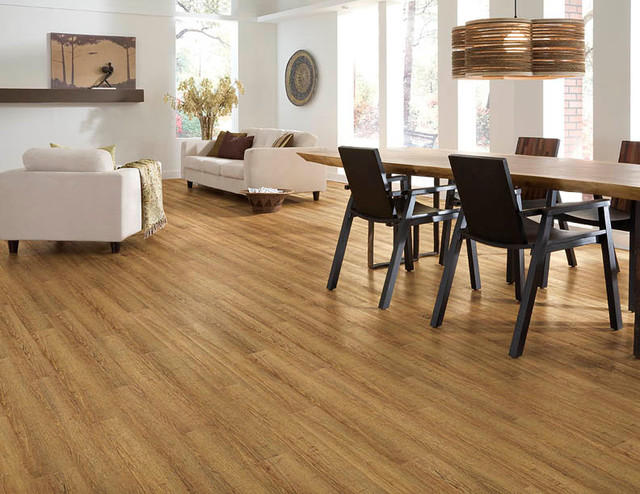The residential vinyl
flooring products are considered as the most practical,
economical and environmentally friendly solutions for every home.
Home vinyl flooring is basically a building material that is made
of polyvinyl chloride, or shortly known as PVS. The vinyl flooring
for homes in appearance is similar to linoleum, but it is more
durable and more long lasting material because it is made from
recycled and specially engineered materials instead of natural
materials. This home vinyl flooring material is generally used
for residential applications, but also it can be found in some
commercial applications. It comes in variety of styles and shapes,
and it is quite popular in Australia and beyond.
There are two basic types
of residential vinyl flooring products on the market: printed
or inlaid home vinyl flooring. The first type, printed vinyl
flooring for homes, is considered as the less durable and
affordable when compared with the second type. It comes with a tiny
sheet of vinyl which is topped by a printed paper top coat. The
inlaid home vinyl flooring is is more expensive and heavier,
and it includes more vinyl in every sheet. Both types, the printed
and the inlaid vinyl flooring for homes, can be found in tile
or sheet format.
The residential vinyl
flooring is a low maintenance and extremely versatile flooring
solution for every home. It is moisture resistant and it is commonly
used in bathrooms, kitchens, living rooms and other places that are
prone to splashes and spills. The vinyl flooring for homes is
one of the most affordable flooring solution that can be found on the
market, and it is very easy for installation. It comes with built in
cushioned underlayment which makes it more comfortable and well
insulated.
However, although the
home vinyl flooring is considered as the most affordable
solution, it has shorter lifespan when compared with other flooring
options. With time, the residential vinyl flooring can wear
down and can lose its luster. They are difficult for repairs and need
to be replaced entirely. The vinyl flooring for homes is also
very sensitive to high sun and extreme cold. Extreme weather
conditions can cause the surface of the vinyl flooring to crack or to
fade away.
The installation process
begins with sub-floor preparation. Residential vinyl flooring
can be installed over concrete or wood base but needs to be well
protected from high moisture levels. This is important because the
moisture can cause the adhesives and the glue to fail. You can use a
building paper to isolate and protect the vinyl from the moisture.
Usually, the vinyl tiles are peel and stick, and because of that they
can be installed very easily.
When choosing between
different types of vinyl flooring, consider the installation time,
the traffic level in your home and the costs. If you plan to use the
vinyl for high traffic areas in your home, choose the inlaid home
vinyl flooring. The printed vinyl flooring is ideal for light
traffic areas in your home. Use the tile formats if you like more
design, or stick with the sheet vinyl if you are tight on budget.

No comments:
Post a Comment